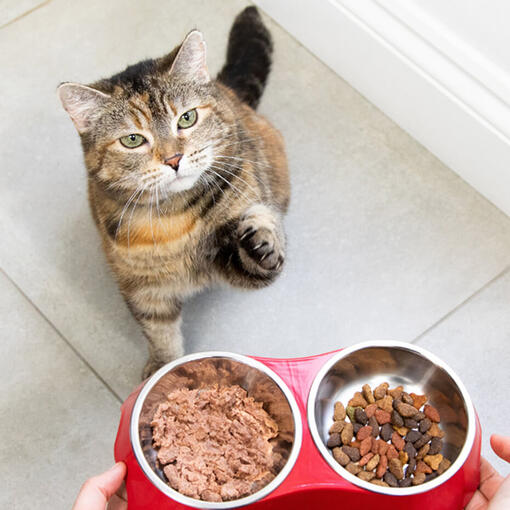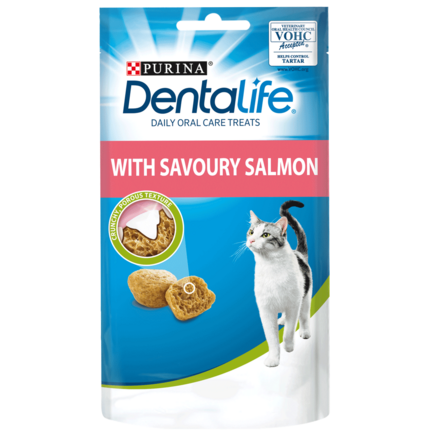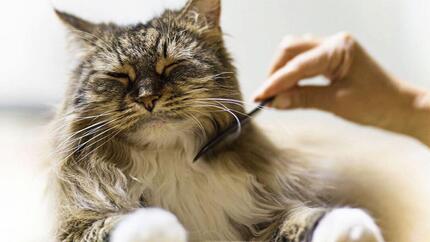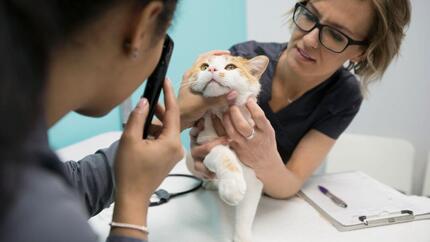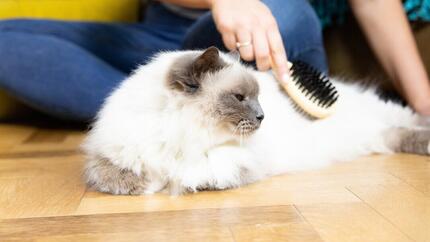
It may sound odd, but cats are every bit as prone to hay fever as us humans are. However, the symptoms can be different, and your cat may be suffering from this allergy without you realising.
This is because you may not recognise the signs as being due to your cat’s hay fever.
As spring arrives and human hay fever sufferers experience the onset of a runny nose, lots of sneezing and itchy eyes, you may be wondering what cat hay fever symptoms are and how you can prevent your feline friend from the dreaded spring allergy.
As they explore the garden and surrounding neighbourhood, cats will no doubt come into contact with pollen, and some may have allergic reactions. In this article we will be exploring all you need to know about cat hay fever symptoms, and how you can treat your feline’s allergies.
What is hay fever in cats?
Hay fever in cats is an allergic reaction to pollen, typically caused when it comes into contact with the mouth, nose, eyes and throat. Feline hay fever isn’t just caused by flower pollen, the reaction can also come from grass and trees.
Allergic reactions happen when the immune system overreacts to something that it perceives as a threat. Hay fever is caused when the fine pollen particles enter into the upper airways and trigger this abnormal immune response. Chemicals like histamine are released, and it is excess levels of these substances that result in the symptoms of an allergic reaction.
Cat hay fever symptoms
Whereas hay fever in humans tends to cause cold-like symptoms such as sneezing, coughing, and a runny nose, cat hay fever symptoms are more likely to manifest as itching and skin irritation.
Itchy cats will often groom themselves a lot as well as scratching, so if you notice that your cat is grooming for longer than usual, it could actually be that they are feeling itchy. This excessive grooming and scratching may start to make the skin sore. Commonly affected areas include the ears, bottom, paws and belly.
Some of the signs of cat hay fever are more commonly associated with fleas, so it’s best to rule them out as well as consulting your vet for advice. Check your cat’s coat for flea droppings, and make sure that they are up to date with flea treatments. Although less common, some cats may suffer with sneezing, wheezing and coughing due to hay fever, and these symptoms may be particularly prevalent if your cat also has asthma.
What causes hay fever in cats?
Cat hay fever can be caused by a sensitivity to the same allergens in the air that affect humans. Allergic rhinitis is recognised in cats, causing a runny nose, sneezing and difficulties breathing. However, allergies in cats are much more commonly linked to skin and gastrointestinal issues. Cats with allergies usually become very itchy, causing them to scratch and groom excessively at their skin. This results in lost fur, damaged skin and secondary skin infections. Some food allergies can also cause itching, in addition to vomiting or diarrhoea.
Unlike food allergies, cat hay fever is usually seasonal, with symptoms worse when pollen counts are high.
How to treat cat hay fever
If you feel your cat is suffering from hay fever, or any other allergy, the best option is to visit the vet to get specific advice. Your vet will be able to discuss all the treatment options available including medication to control itching and desensitising injections (known as immunotherapy).
Treatment options for a cat’s hay fever
Before deciding on a treatment plan, your vet may want to investigate your cat’s hay fever symptoms, to get an accurate diagnosis. Some of the symptoms can also indicate other health problems, so these will need to be ruled out before deciding on an appropriate treatment.
Your vet may prescribe a daily antihistamine treatment, steroids or allergy injections for airborne pollensto help get symptoms under control. Another treatment option is bathing once or twice a week which is useful in removing pollen from the coat, as well as soothing itchy skin.
It's important that you don’t try to use any home remedies for cat hay fever before checking with your vet that it is safe to do so, as this could make the problem worse.
How to treat itchy skin
Itchy skin is very irritating and uncomfortable, so anything you can do to alleviate your cats need to itch will be much appreciated by your feline friend. Always seek the advice from a veterinarian for the best treatments moving forward for your furry friend.
Keeping your cat away from hay fever causes
In an ideal world, prevention is better than a cure, though unfortunately it’s often not possible to completely remove pollen from a cat’s environment. Keeping your cat inside when there is high pollen count will help to avoid the onset of symptoms, although this can be much easier said then done, particularly with adventurous felines.
You can help reduce the amount of pollen in your cat’s indoor environment by making sure to hoover and dust regularly, including regular cleaning of their beds, toys and any climbing frames. Brushing your cat can also help remove pollen from their coat, so try and do this at least once a day.
There’s our guide to hay fever and how it affects our furry feline friends. If you want to know more about cat allergies and what may be causing them, read our article, food allergies in cats, next.


